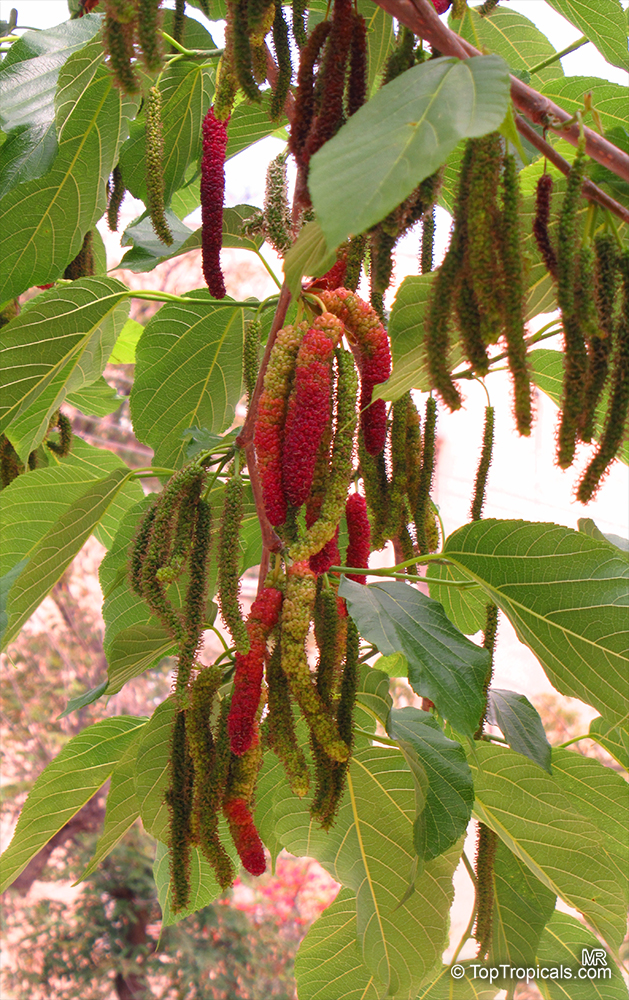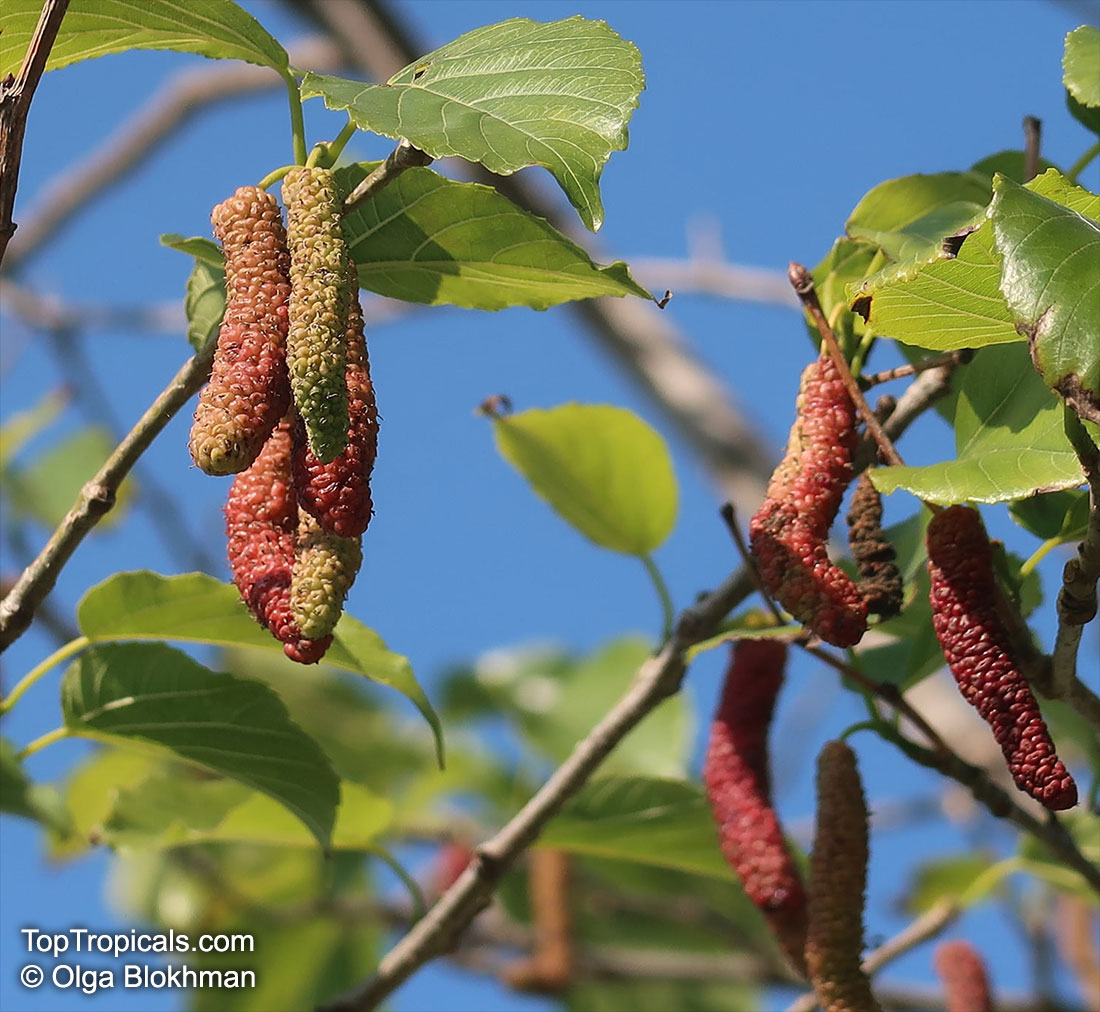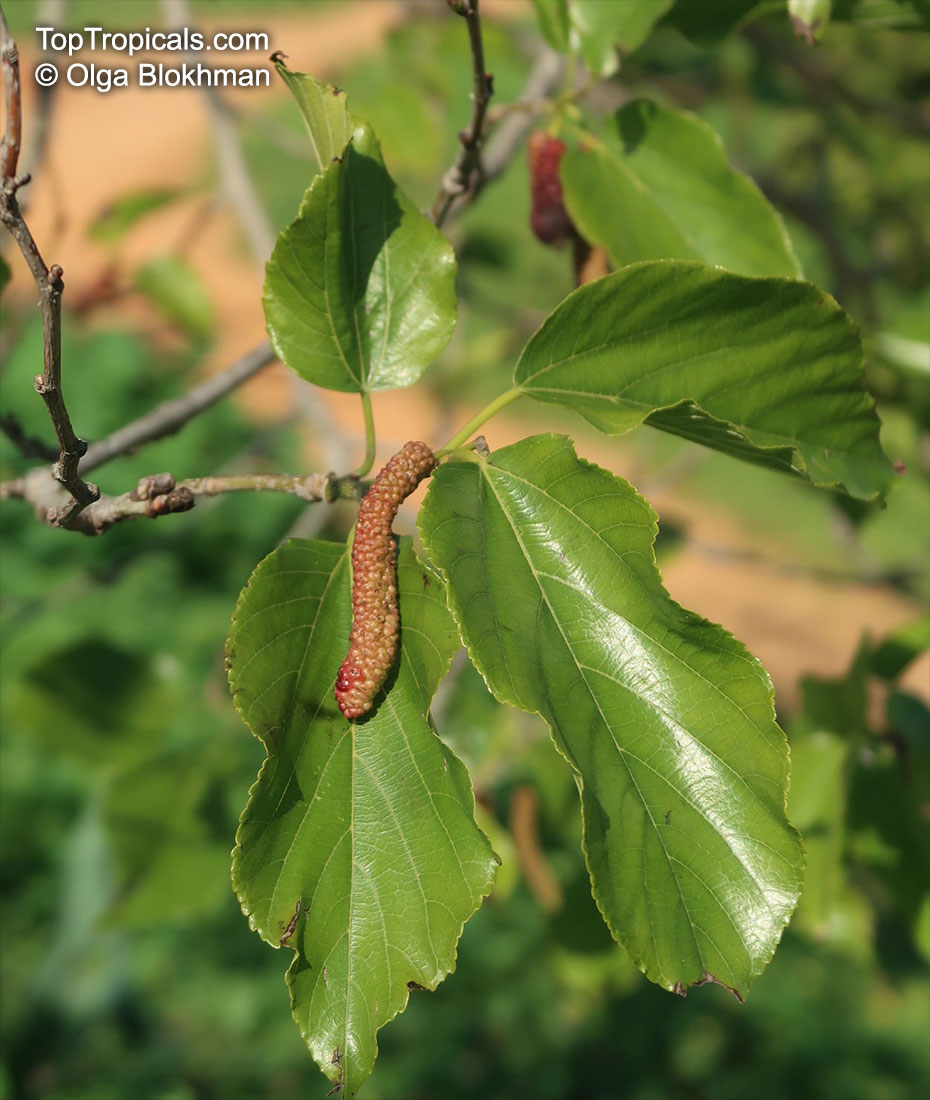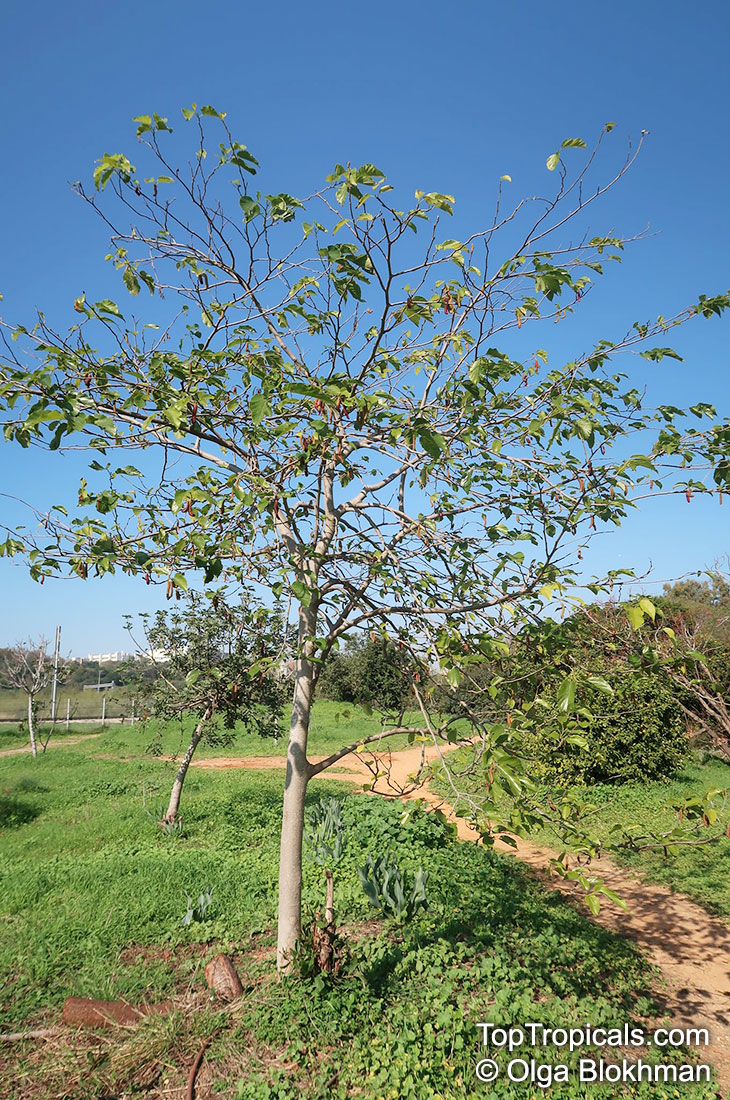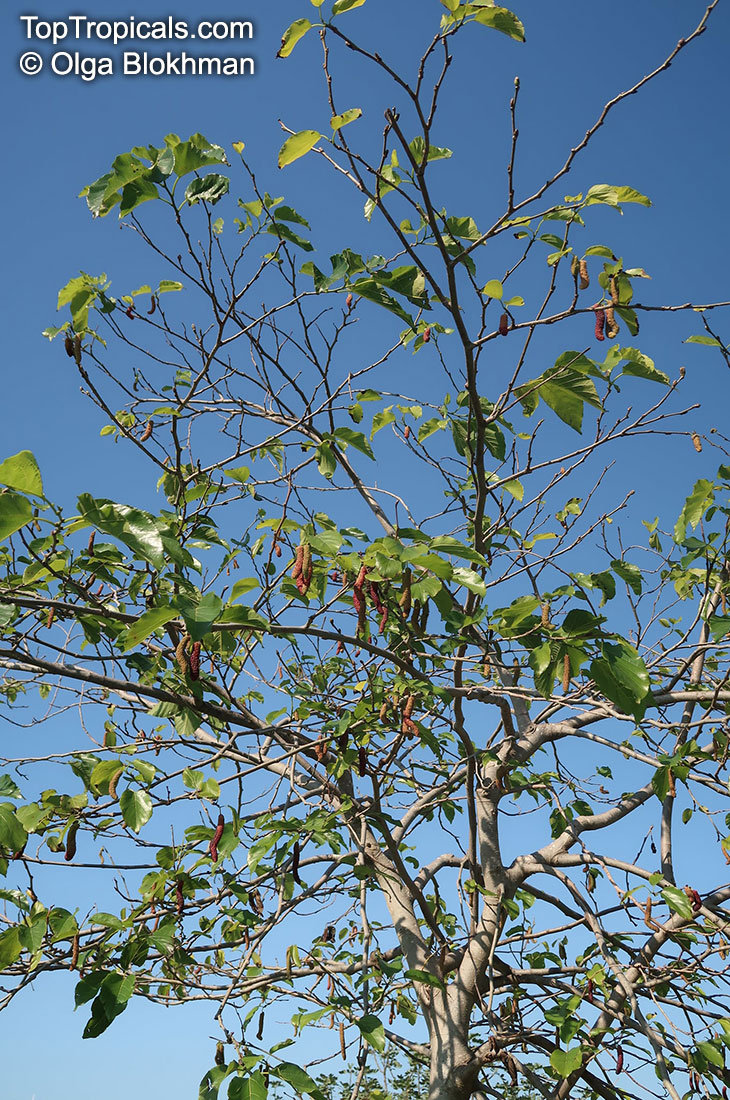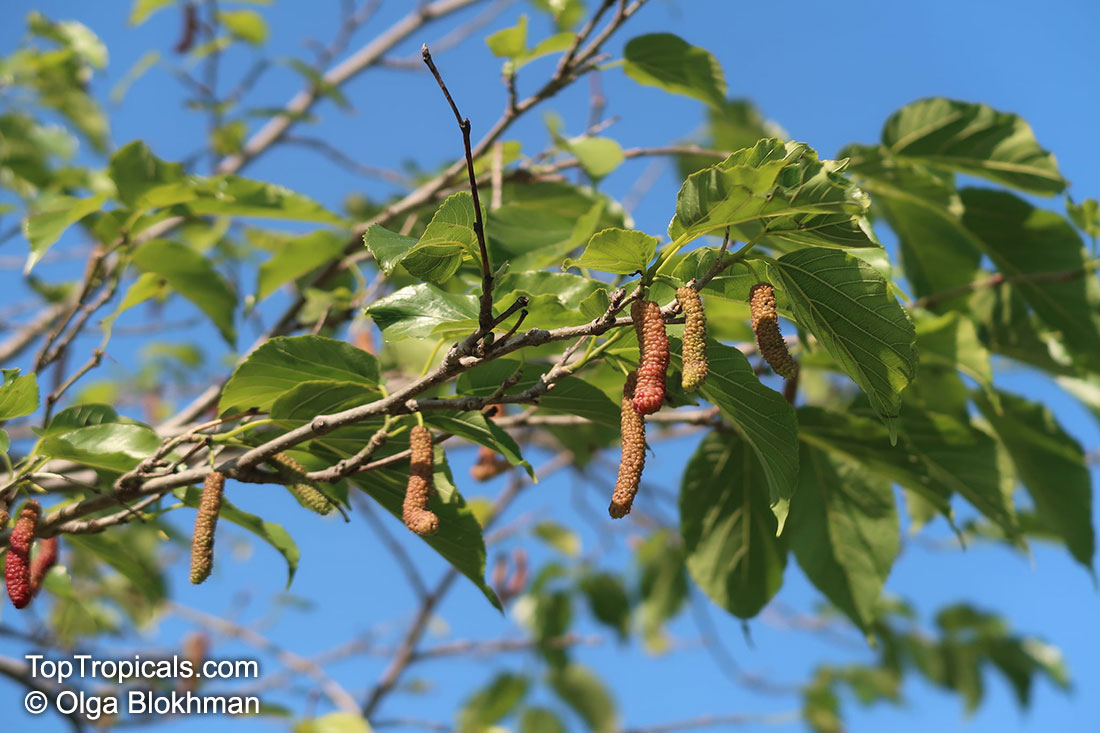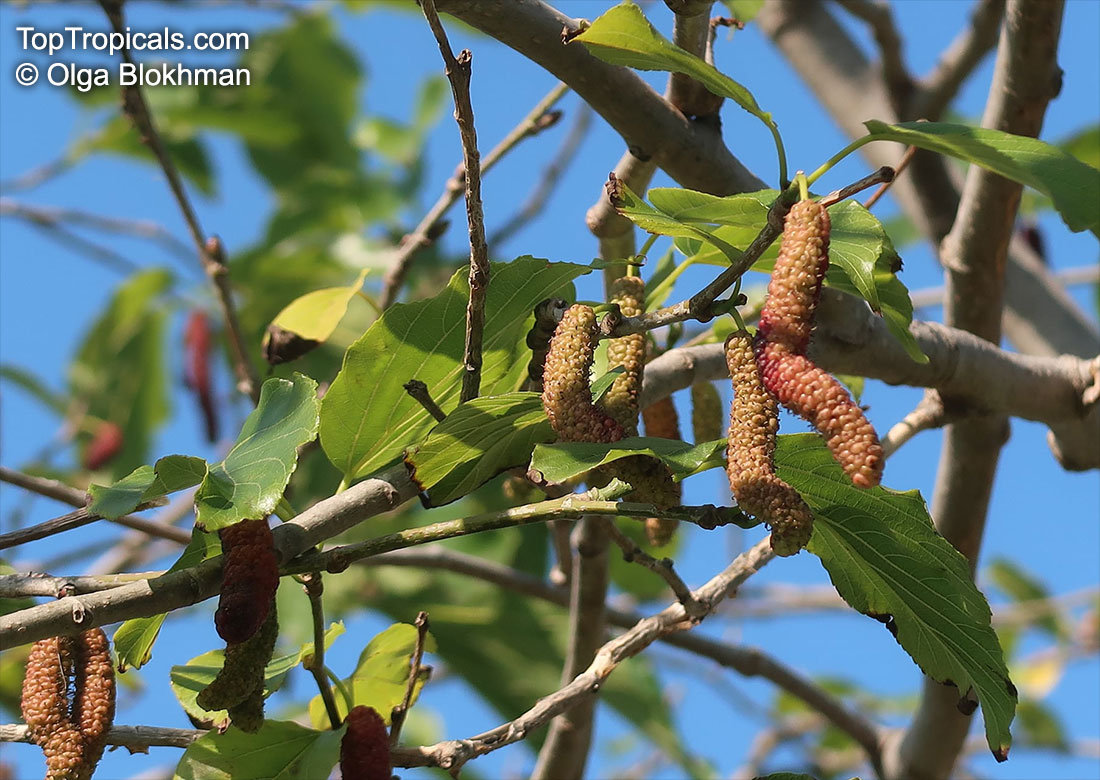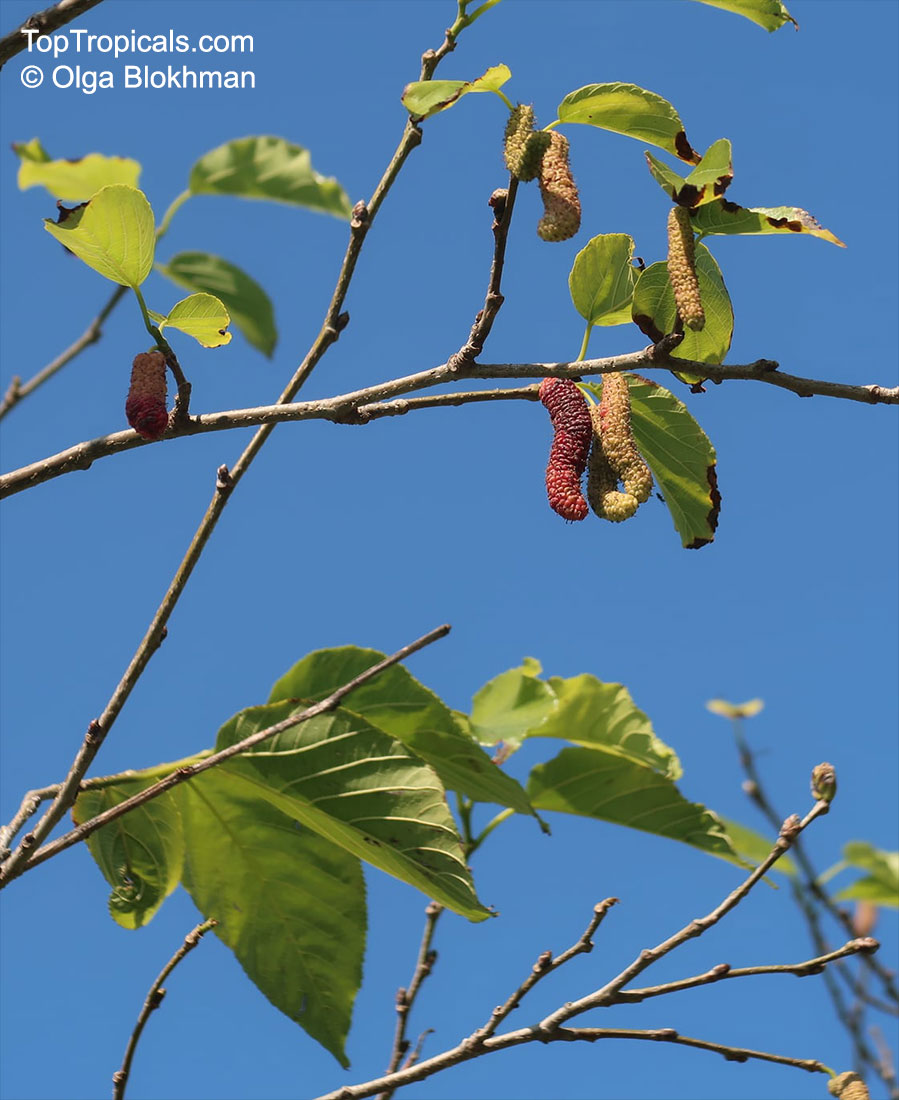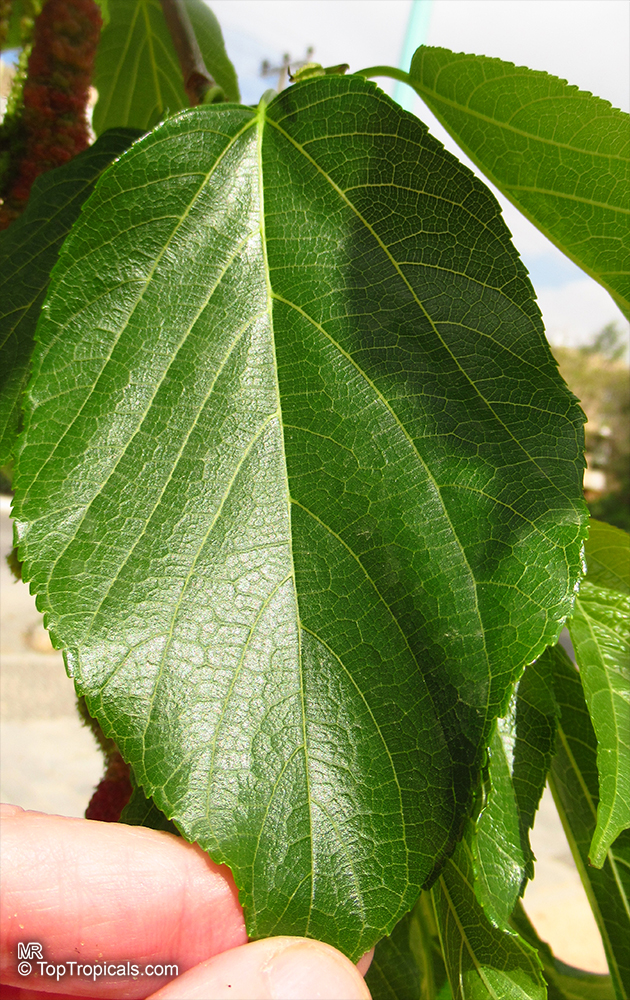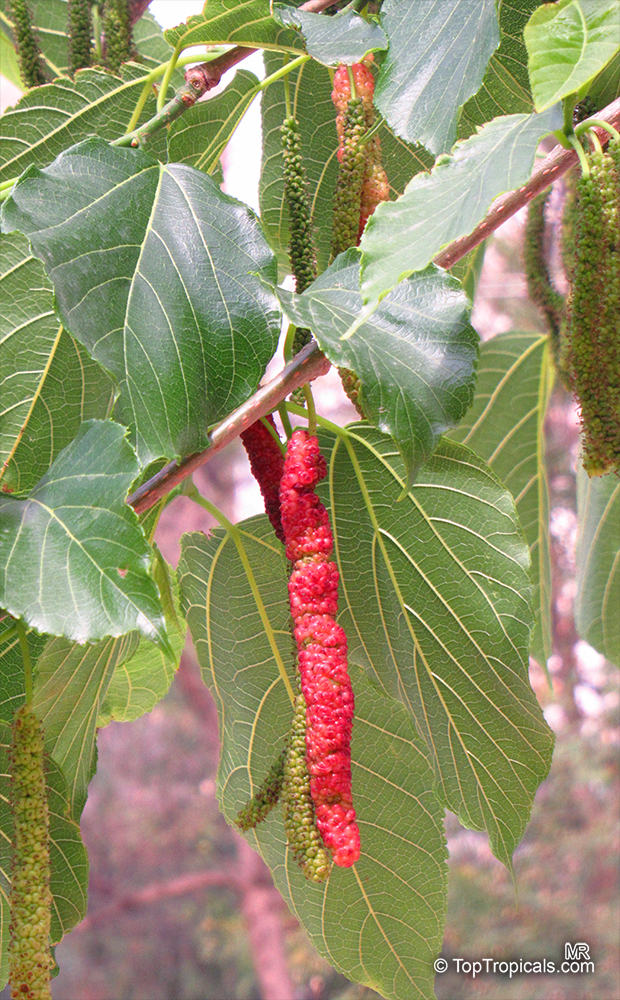Morus macroura (King White Mulberry)
Top Tropicals Plant Encyclopedia
Botanical names: Morus macroura, Morus alba var. laevigata
Common names: King White Mulberry, Shahtoot Mulberry, Tibetan Mulberry, Long Mulberry
Family: Moraceae
Origin: Tibet, Himalayas, Indochina








Morus macroura, or King White Mulberry, is a deciduous plant native to Tibet, Himalayas, and Indochina that can be used for bonsai. It is a small tree that typically reaches a height of 10-20 ft available in full sun or partial shade, and requires regular to moderate water. Not only is it an ethnomedical plant, but it is also edible. It is best grown in USDA hardiness zones 7 -10.
The King White Mulberry bears fruits, which vary in color from yellowish-white to almost black. The fruits can be up to 3-4 inches long and contain numerous small, yellowish drupelets that hold the sweet, edible pulp. Not only are the fruits edible, they are also very healthy. They are rich in antioxidants, vitamins, and minerals which can help support an overall healthy lifestyle. The juice of the bark is also used for medicinal purposes and applied to cuts and wounds.
King White Mulberry tree is a fruitful tree that can produce several hundred pounds of fruit each year. If the tree is grown in a pot in cold regions, it will need to be moved indoors during the winter and then back outdoors once temperatures warm up. This can be done with proper preparation and care, including careful watering, proper soil, and pruning to keep the size of the tree manageable. It is important to also prune off any dead or dying branches as well as any overly vigorous growth. All of these elements will help create a strong, healthy tree with an abundant yearly crop.
